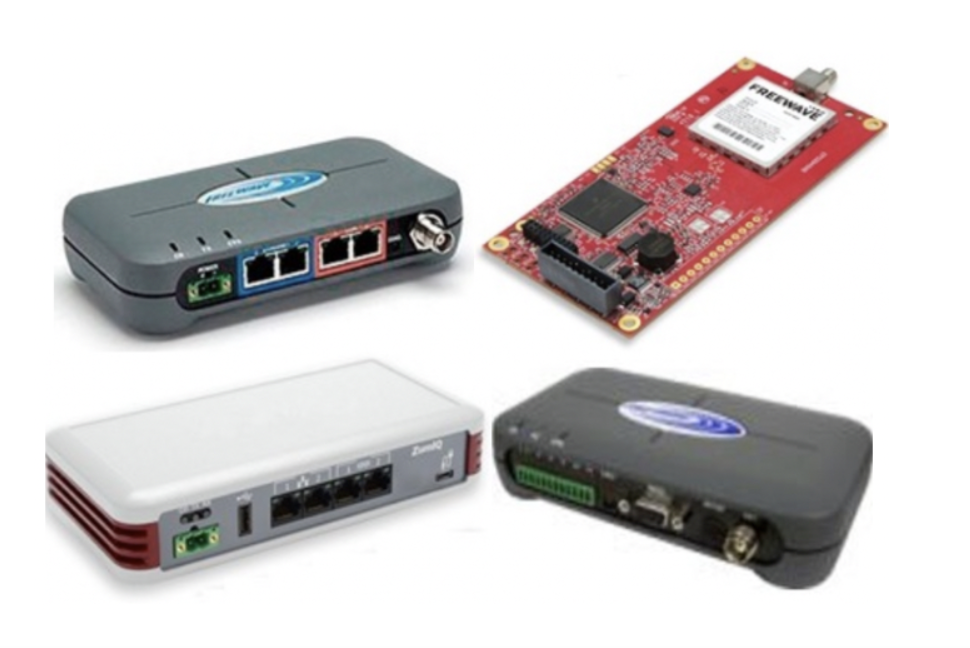Freewave Radios

FreeWave 900 MHz radios are industrial-grade wireless communication devices designed for secure, long-range data transmission in challenging environments. RSP Supply offers a full selection of FreeWave Ethernet, FGR, and IO radios engineered to support reliable machine-to-machine communication where wired networks, fiber, cellular, or traditional Wi-Fi are impractical. These radios are widely used in industrial automation, SCADA systems, remote monitoring, and critical infrastructure applications.
Operating in the 900 MHz frequency band, FreeWave radios utilize Frequency-Hopping Spread Spectrum (FHSS) technology to improve reliability and security. FHSS rapidly changes carrier frequencies across multiple sub-bands, reducing susceptibility to interference and making wireless transmissions more resistant to interception. This technology allows FreeWave radios to maintain stable communication over long distances while operating at low power levels.
FreeWave FGR and Ethernet radios offer flexible configuration options to support complex network topologies. FGR3 radios can be configured as gateways, endpoints, repeaters, or combined repeater/endpoints within a single device. FreeWave IO radios support Modbus mode for direct SCADA integration and Wire Replacement mode for point-to-point IO expansion. Together, these solutions provide adaptable wireless networking for industrial systems requiring dependable performance and simplified deployment.
FAQs
Q: What is Frequency-Hopping Spread Spectrum (FHSS)?
FHSS is a wireless communication method that rapidly switches carrier frequencies across multiple sub-bands, reducing interference while improving communication security and reliability.
Q: What applications are FreeWave radios commonly used for?
FreeWave radios are commonly used in SCADA systems, industrial automation, telemetry, remote monitoring, and machine-to-machine communication applications.
Q: What is the difference between FreeWave FGR2 and FGR3 radios?
The FGR3 series replaces the FGR2 series and is backward compatible. FGR3 radios provide enhanced performance and can function as a gateway, endpoint, repeater, or combination device.
Q: Are FreeWave FGR2 radios still available?
FreeWave FGR2 radios have historically been used in North America, but the series has been phased out and replaced by the FGR3 series, which maintains backward compatibility with existing networks.
Q: What operating modes are available for FreeWave IO radios?
FreeWave IO radios support Modbus mode for direct SCADA integration and Wire Replacement mode for replacing physical wiring between remote devices.
Why Buy FreeWave 900 MHz Radios from RSP Supply
RSP Supply offers a comprehensive selection of FreeWave 900 MHz Ethernet, FGR, and IO radios to support secure and reliable industrial wireless communication. Our solutions help customers deploy long-range networks without the complexity of cellular or fiber infrastructure. Customers rely on RSP Supply for dependable inventory, accurate technical guidance, and industrial wireless products designed for demanding applications.

